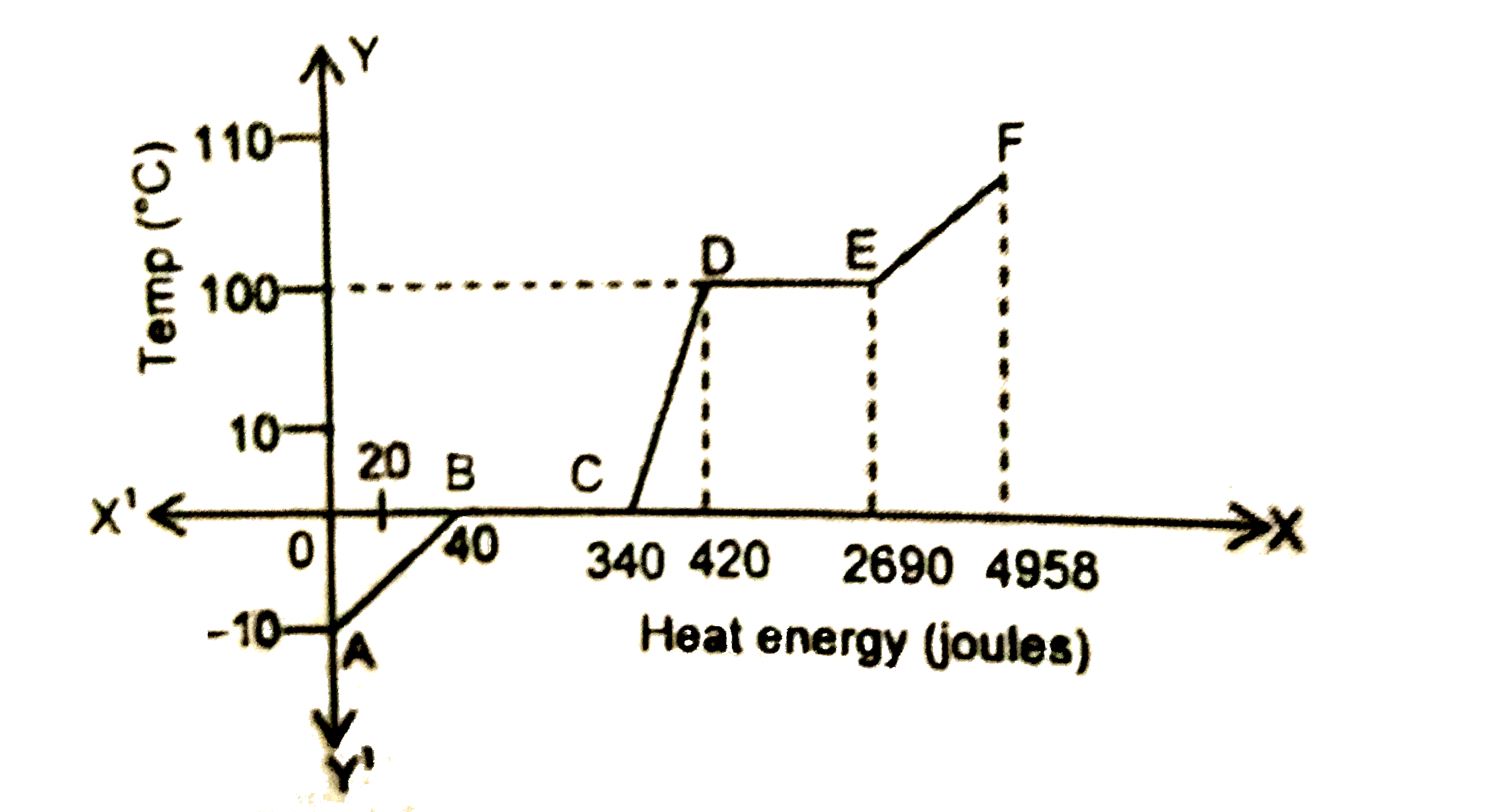Heat of transition is the heat evolved or absorbed when a substance is converted from
Solid to liquid
Solid to vapour
Liquid to vapour
One allotropic form to another allotropic form
The correct Answer is:D
Step-by-Step Solution:
1. Understanding Heat of Transition:
- Heat of transition refers to the heat that is either absorbed or released when a substance changes from one phase to another or from one allotropic form to another.
2. Identifying the Phases:
- The common phases of matter include solid, liquid, and gas.
- The transitions between these phases involve specific terms:
- Solid to Liquid: This process is known as melting or heat of fusion.
- Liquid to Gas: This is referred to as vaporization.
- Solid to Gas: This is called sublimation.
3. Allotropic Forms:
- Some substances can exist in different structural forms, known as allotropes. For example, carbon can exist as graphite or diamond.
- The transition from one allotropic form to another, such as from graphite to diamond, involves a specific energy change known as heat of transition.
4. Conclusion:
- Therefore, the heat of transition is the heat evolved or absorbed when a substance is converted from one phase to another or from one allotropic form to another.
Final Answer:
The heat of transition is the heat evolved or absorbed when a substance is converted from one phase to another (e.g., solid to liquid, liquid to gas) or from one allotropic form to another (e.g., graphite to diamond).
---
- Heat of transition refers to the heat that is either absorbed or released when a substance changes from one phase to another or from one allotropic form to another.
- The common phases of matter include solid, liquid, and gas.
- The transitions between these phases involve specific terms:
- Solid to Liquid: This process is known as melting or heat of fusion.
- Liquid to Gas: This is referred to as vaporization.
- Solid to Gas: This is called sublimation.
- Some substances can exist in different structural forms, known as allotropes. For example, carbon can exist as graphite or diamond.
- The transition from one allotropic form to another, such as from graphite to diamond, involves a specific energy change known as heat of transition.
- Therefore, the heat of transition is the heat evolved or absorbed when a substance is converted from one phase to another or from one allotropic form to another.
The heat of transition is the heat evolved or absorbed when a substance is converted from one phase to another (e.g., solid to liquid, liquid to gas) or from one allotropic form to another (e.g., graphite to diamond).
Topper's Solved these Questions
- THERMODYNAMICS AND THERMOCHEMISTRY BOOK - ERRORLESS CHAPTER - THERMODYNAMICS AND THERMOCHEMISTRY EXERCISE - ORDINARY THINKING (Objective Questions) Bond energy
15 Videos
- THERMODYNAMICS AND THERMOCHEMISTRY BOOK - ERRORLESS CHAPTER - THERMODYNAMICS AND THERMOCHEMISTRY EXERCISE - ORDINARY THINKING (Objective Questions) Free energy and Work function
57 Videos
- THERMODYNAMICS AND THERMOCHEMISTRY BOOK - ERRORLESS CHAPTER - THERMODYNAMICS AND THERMOCHEMISTRY EXERCISE - ORDINARY THINKING (Objective Questions) First law of thermodynamics and Hess law
100 Videos
- SOME BASIC CONCEPTS OF CHEMISTRYBOOK - ERRORLESS CHAPTER - SOME BASIC CONCEPTS OF CHEMISTRYEXERCISE - JEE Section (Matrix Match type questions)
3 Videos
Similar Questions
Knowledge Check
The heating curve of a particular substance in solid state is a shown in the figure .choose the correct alternative

The amount of heat energy absorbed by the substacne to change completely from liquid at its boiling point to gaseous state is _______JA4618B2270C4538D4958The amount of heat energy absorbed by the substance to change completely form liquid at its boiling point to gaseous state is ______J
 A4618B2270C4538D4958
A4618B2270C4538D4958In the presence of a catalyst, the heat evolved or absorbed during the reaction:
AincreasesBdecreasesCremains unchangedDmay increase or decrease.
Assertion : Internal energy change in the heat evolved or absorbed at constant pressure.
Reason : Internal energy is state function.
View SolutionThe total amount of heat evolved or absorbed in a reaction depends upon the number of steps in which the reaction takes place.
View SolutionIn the presence of a catalyst, the heat evolved or absorbed during the reaction:
View SolutionWhen a magnetic substance is heated, then it
View SolutionHeat is evolved during
View Solution
